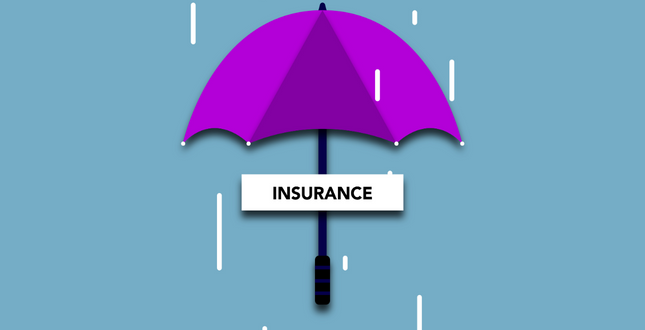The 14th-century practice of merchants is the ancestor of the contemporary insurance contracts we use today, including life insurance. It’s also common known that various forms of security agreements have existed from the beginning of time and are conceptually similar to early insurance contracts.
Life insurance’s meteoric rise from virtually nothing a century ago to its massive size now is not one of the most impressive feats of modern capitalism. The continuous need for financial safety, the ever-increasing desire for social stability, and the growing demand for protection against the risks of cruel-crippling tragedies and abrupt economic shocks all contributed to life insurance becoming one of the basic requirements of humankind. It’s no longer just the wealthy who can afford insurance. In today’s modern world, insurance contracts are rife with the confident dreams of many families of modest means, dispelling the myth that such safety nets are only available to the wealthy. It permeates every level of society and permeates the national economy. It deals with some of the purest and most precious relationships a human can have. Parental adoration. The devotion of spouses. The adoration of little ones. Indeed, even a passion for commercial enterprise.
The Value of Life Insurance as a Safety Net
In the event of the insured’s death, the insurance company will pay the beneficiary the sum promised. You and your dependents can count on the money from your life insurance policy’s “sum assured” to cover your expenses in the case of your death or disability. Therefore, life insurance provides monetary protection or coverage against these dangers.
Guidelines for Understanding Life Insurance
The purpose of insurance is to distribute the financial impact of a catastrophic event. All of the premiums from the company’s customers are combined into a single pot that pays for everyone’s coverage. In theory, all insureds’ losses can be covered by the whole amount of premiums paid in.
With life insurance, one party guarantees the other will not suffer a financial loss due to the insured’s untimely demise. For a premium, an insurance company promises to pay out a set amount of money in the event of the insured person’s death within the policy’s specified time frame. Because of the intertwined nature of life and accident insurance and the fact that both depend on the loss of life to pay out, the term “life insurance” is often used to refer to the latter.
That’s why the assured (policyholder) and the insurer (life insurance business) are the parties to the policy contract (the insurer). The policyholder agrees to pay a premium for a certain amount of time that varies with the specifics of the policy.
It follows that life insurance is a very valuable policy. Because of this, we cannot call it an indemnification agreement. In most cases, the insured’s financial stake in another person’s or their own life is not easily quantifiable. There is no way to quantify the value of a human life. Therefore, the amount of compensation is equal to the limit stipulated in the policy. In the situation of a creditor insuring the life of a debtor, however, the interest of the insured becomes amenable to precise monetary assessment. The insured creditor’s interest here is quantifiable since it is tied to the principal amount of the loan.
Common Types of Life Insurance
In addition to the aforementioned uses, life insurance is commonly sold to its potential buyers for objectives like saving for retirement or making an investment. To provide just one example, an annuity can be a great way to secure a steady stream of income throughout your golden years.
Life insurance policies that include a savings and investment component, including whole life and endowment participation policies or investment linked plans (ILPs), are called “participating policies” or “investment linked plans.” As a result, the rates will be more than they would be for a pure insurance product like term insurance, even if the coverage would be the same.
These packages have a positive aspect in that they accumulate funds and pay out at the conclusion of the insurance term. Therefore, monetary values are distributed at the time of death if they are part of a policy’s death benefit. On the other hand, there is no opportunity for a cash value accumulation with term insurance.
In many regions, selling bundles of goods as a way to save money is standard practice. Part of the premiums paid by the insured are invested to develop cash values, which is a distinctive feature of modern insurance practice. However, unlike savings deposits, where the guaranteed cash value is guaranteed to never be less than the whole amount of premiums paid, this technique exposes the premiums to investment risks.
Essentially, as a potential policyholder, you need to take a hard look at what you hope to get out of the coverage. After this is done, and you know what you want out of life insurance, you may pick the right policy. Prioritize your family’s safety requirements before anything else if you’re looking to secure their financial future.
The World Outside the Classroom
The maximization of resources is of paramount importance. A greater savings can be realized by purchasing many separate plans. The amount of life insurance coverage you’ll need depends on the ages of your children, but it will be much more if you pass away when your children are 3 and 5 than if you die when they are 35 and 40. Let’s imagine your children are ages 3 and 5, and that if something were to happen to you, they would require a minimum of $2,000,000 to ensure their continued well-being and educational opportunities. Instead of spending a fortune on $2,000,000 worth of permanent life insurance, you may instead get term life insurance of $100,000, $1,000,000, $500,000, or $400,000 for 10, 20, and 30 years, respectively. This is a great solution, as it provides for everything required. If you pass away while your children are under the ages of 13 and 15, they’ll receive $2 million; if they’re between the ages of 13 and 23, they’ll receive $1 million; if they’re between the ages of 23 and 33, they’ll receive $500,000; and if they’re older than 33, they’ll still receive $100,000 for burial costs and final expenses. As your kids become older, your share of the financial burden decreases, making this an ideal solution for your ever-evolving insurance requirements. The premiums you pay throughout the 10, 20, or 30-year term period will no longer be required when that time period ends, giving you the freedom to invest the money elsewhere at your own risk.
All people want for economic independence in today’s monetary-dominated society. I mean, who doesn’t? However, SECURITY in one’s financial situation is something that EVERYONE requires. It is a crucial part of financial literacy, yet most individuals overlook it. They put everything on the line in an attempt to increase their wealth, but end up losing much of it, if not all of it. The most effective strategy is to put some money into guaranteed safety and the balance toward the acquisition of personal freedom.
Because you, the individual, are ever-changing, so too must be your financial strategy. It’s not possible to design a strategy and then ignore it. Because you will be living off of this money for the next twenty to thirty years, or more, in retirement, it is imperative that you keep a close check on it to ensure it is working hard for you. You need to learn how to take care of your money today so that it can provide for you in the future.
 Dekke Finance App Seputar berita aplikasi, trading dan keuangan
Dekke Finance App Seputar berita aplikasi, trading dan keuangan



